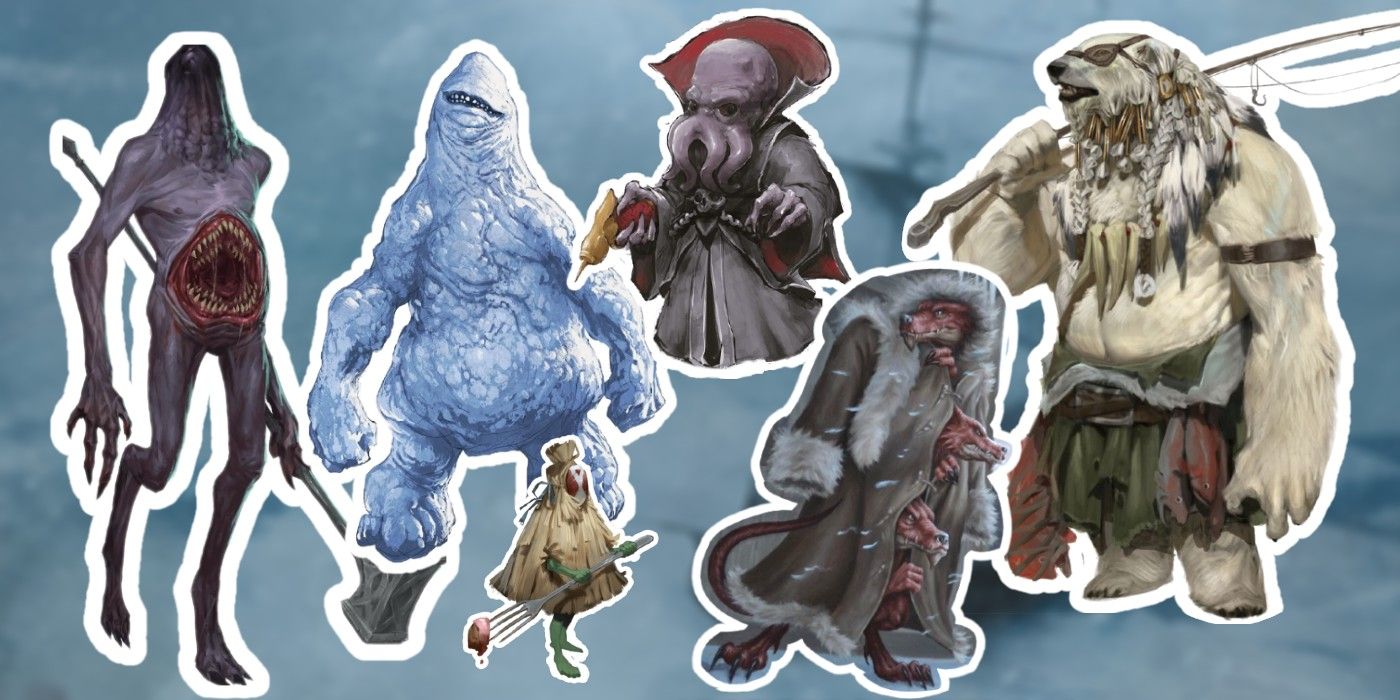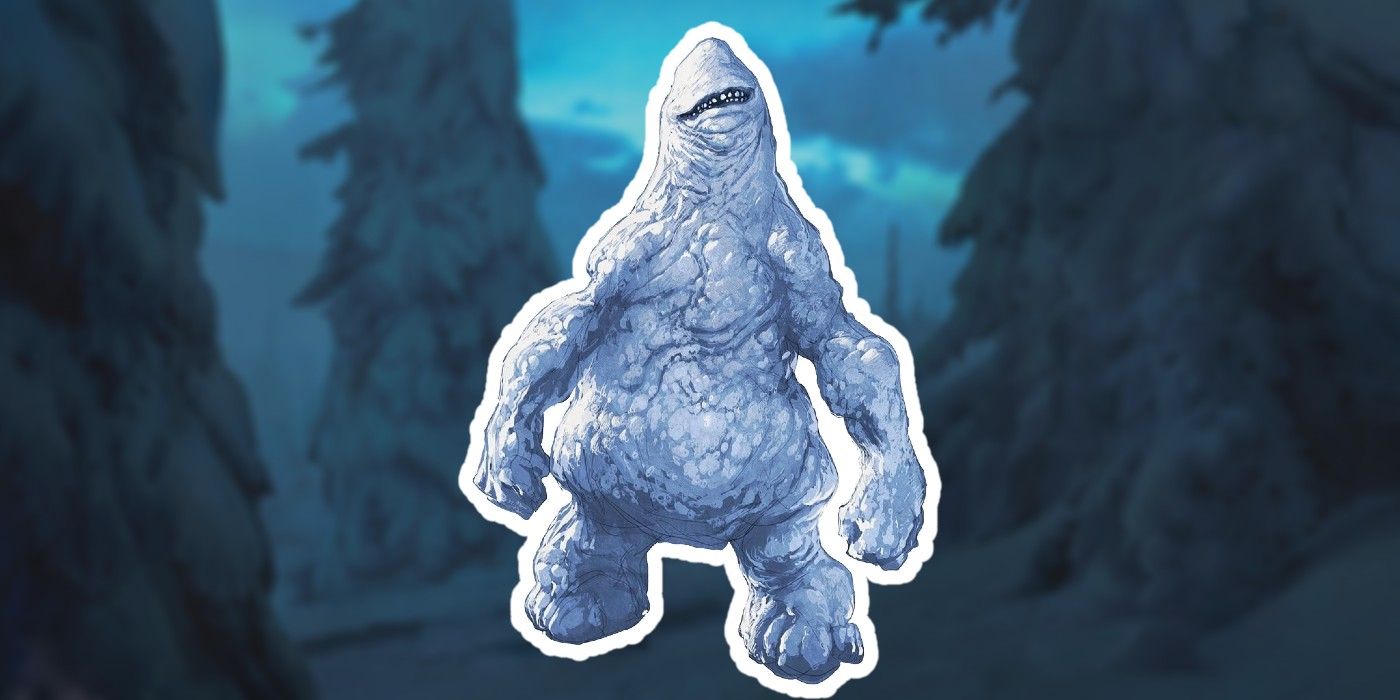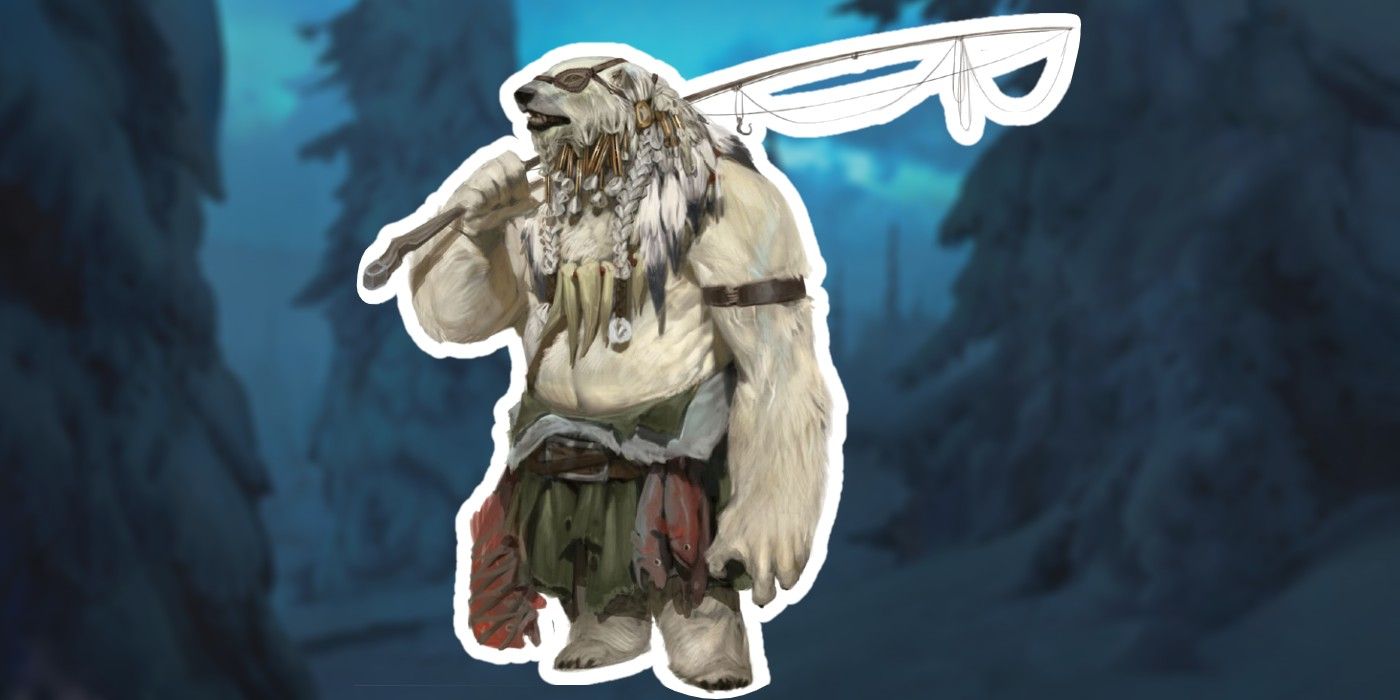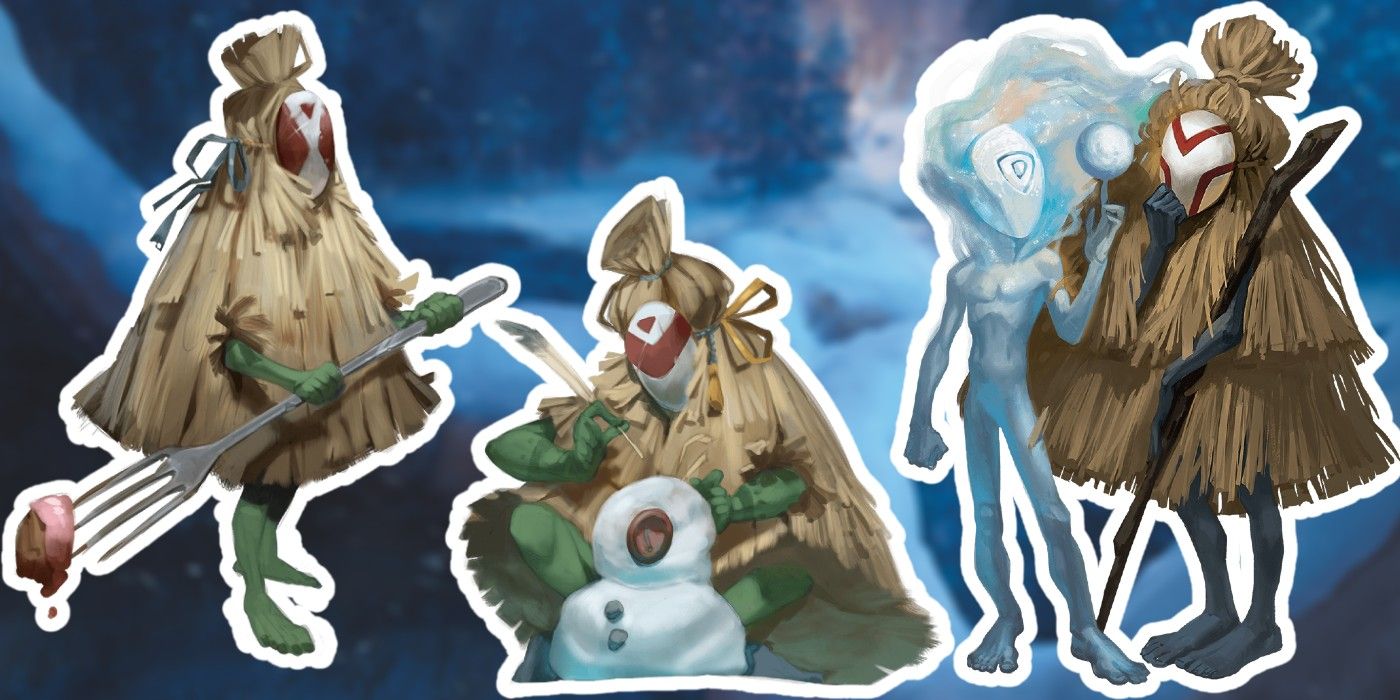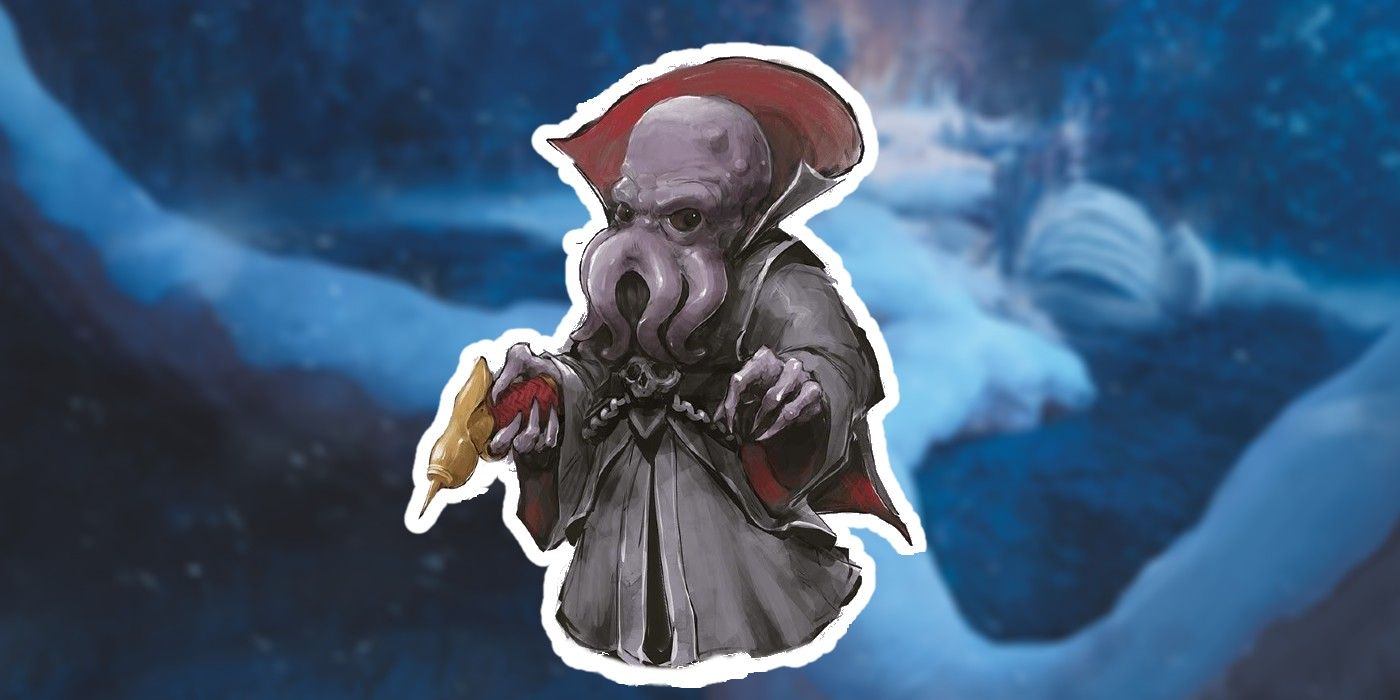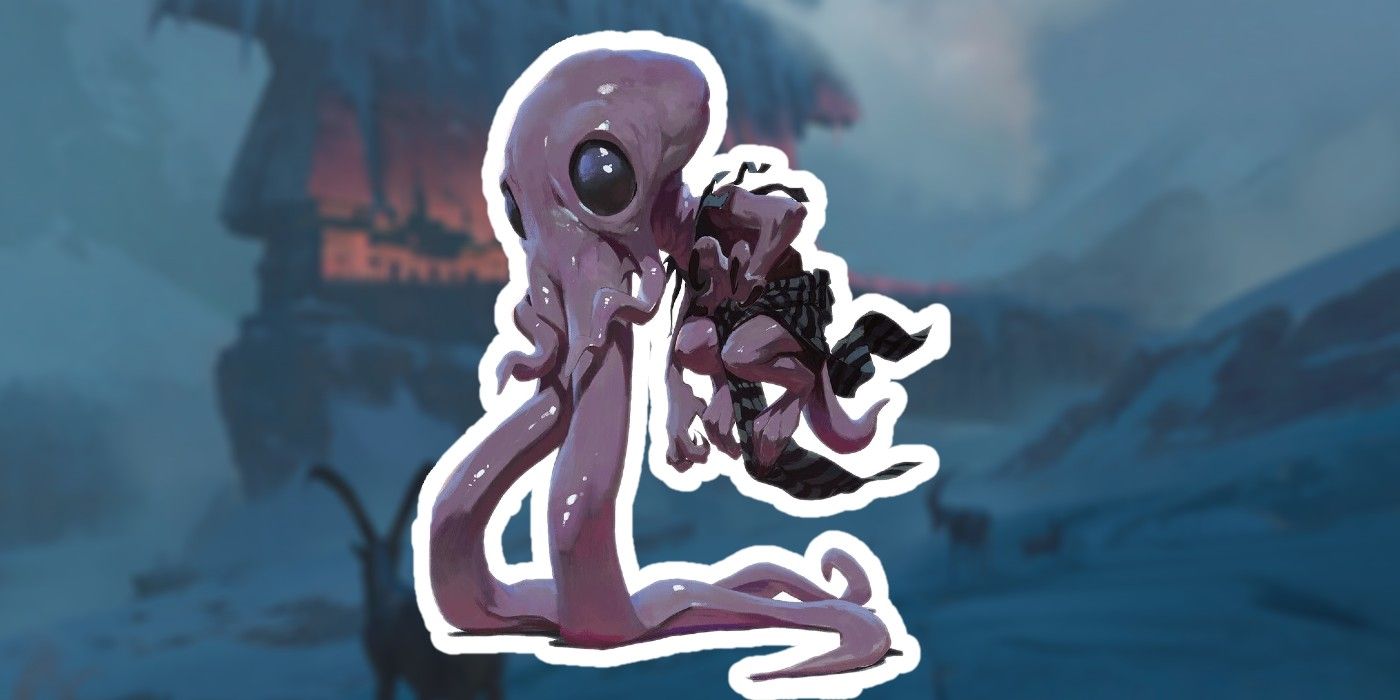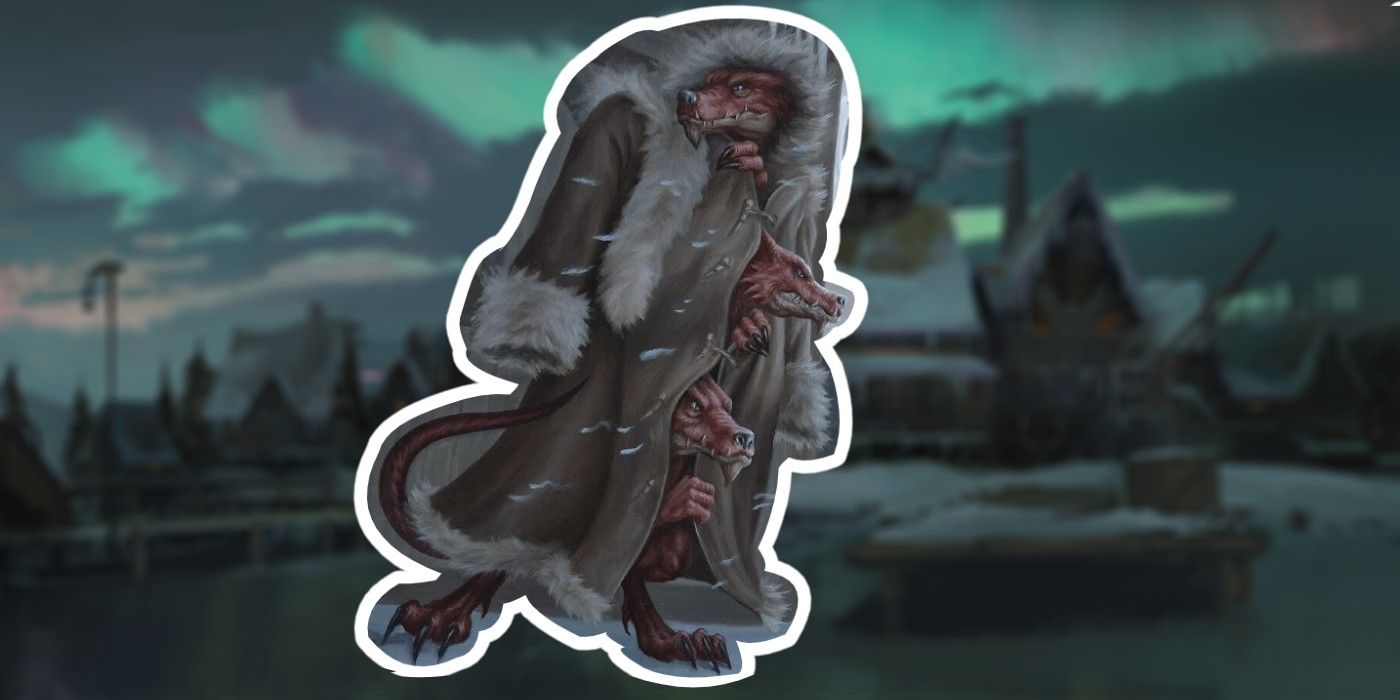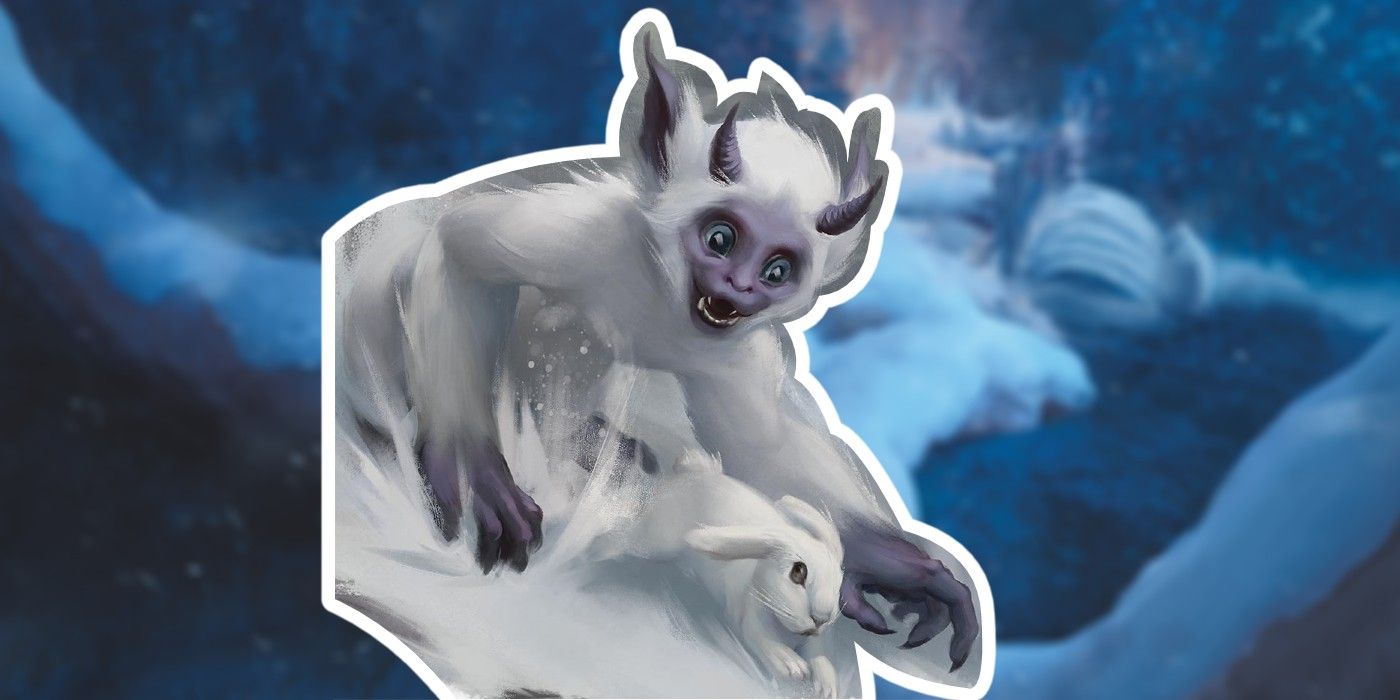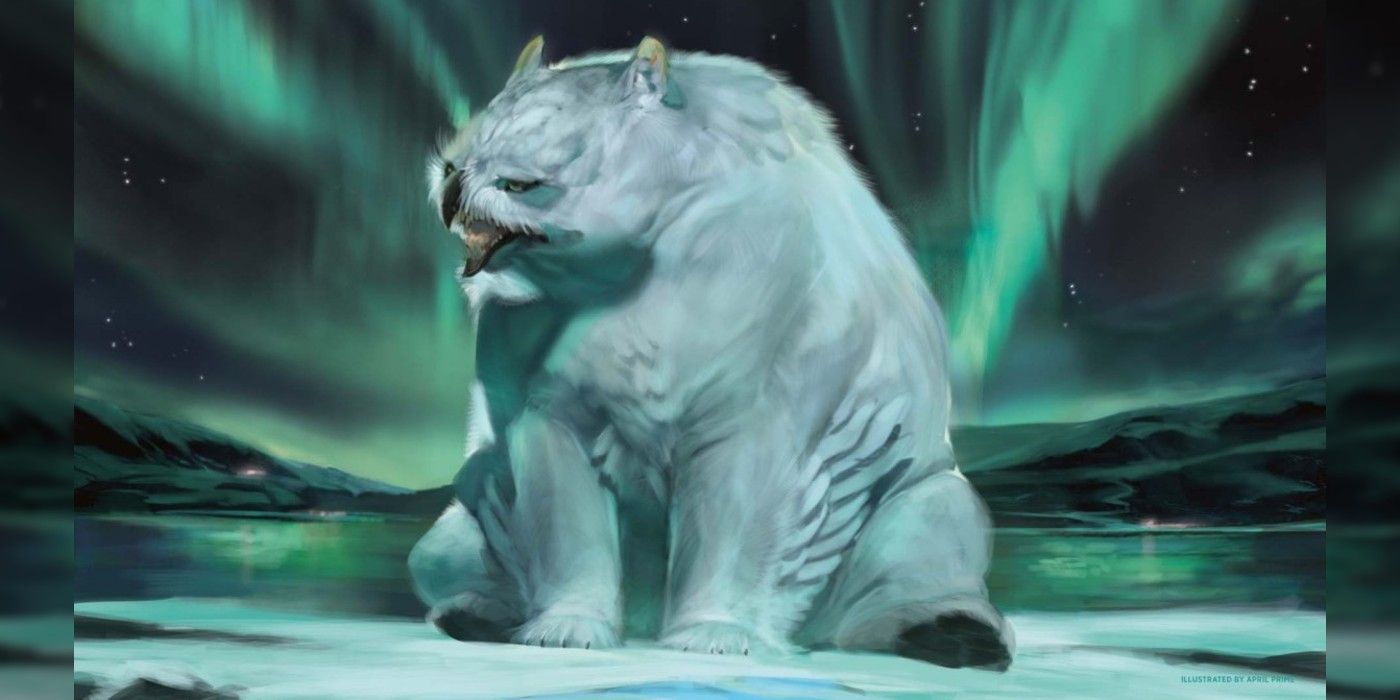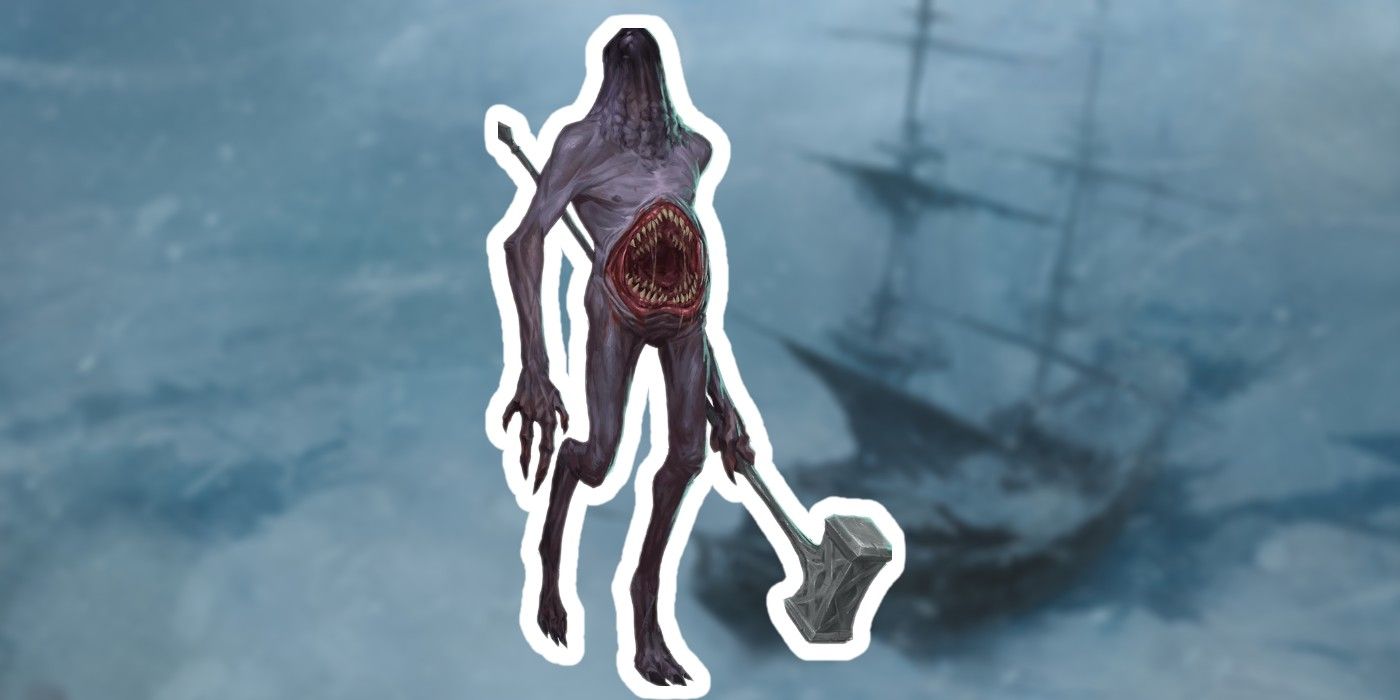Dungeons & Dragons' most recent adventure hardcover Icewind Dale: Rime of the Frostmaiden is an epic campaign that takes place in the frozen north of Faerûn. With the focus on the rather isolated world of Icewind Dale -- which is separated from the rest of Faerûn by the daunting range of mountains called The Spine of the World -- it makes sense that the region is inhabited by critters that can't be found elsewhere.
The 320 page hardcover is a pretty hefty tome in itself, and a sizable chunk of it is due to its bestiary. It adds more monsters than any other Fifth Edition adventure, making it perfect for DMs looking to throw unexpected creatures into their group's encounters. Here are some notable additions that might make you want to bring your campaign to the frozen north.
Snow Golem
When people say "abominable snowman," they're usually thinking about a yeti rather than a snow golem. Rime of the Frostmaiden will make adventurers wary of any snowmen they come across in odd places thanks to the introduction of the snow golem. This is a humanoid construct made of snow that's nearly indistinguishable among the heaping amounts of snow covering the entire region of Icewind Dale.
Snow golems ignore any nonmagical weapon damage, with weapons passing through their snowy bulk without any concern for the golem. They're also always ready to throw down, leveraging their massive bulks with bludgeoning slam attacks and lobbing damaging snowballs from afar.
Goliath Werebear
The Goliath Werebear is one of the more formidable creatures introduced here. They're an offshoot of the Goliath race and werebears, making them bigger and hardier than your run-of-the-mill lycanthrope. Rime of the Frostmaiden introduces them as rare and elusive creatures that prowl the savage outskirts of Icewind Dale, with one particular legend whispered amongst the Goliaths -- that of Oyaminartok.
Chwinga
Adorable elemental spirits that populate the areas far removed from civilization, Chwingas stand at a pocket-sized six inches and are identified by their wild hair, slender limbs and mask-like face. Chwingas have a fascination for humanoids and civilization in general, and often find themselves curiously following adventurers about. They are even known to aid those that they find amusing, be it through their observation of mundane practices like grooming or eating, or even with the way they walk. The Chwingas of Icewind Dale have adopted how humanoids garment themselves in warm bundles of clothing, creating coats for themselves.
Gnome Ceremorph
Baldur's Gate 3 introduced a visual depiction of how mind flayers are created, wherein illithid tadpoles are implanted into the brains of humanoid hosts, transforming them into full-blown mind flayers in the span of approximately seven days. This process is called ceremorphosis.
Gnomes are no more immune to it than any other humanoid. They do, however, have more varied results, one of which is the Gnome Ceremorph. Its appearance resembles a mind flayer, though it maintains its gnome size. No less deadly, the Gnome Ceremorph retains fragmented memories of its previous life, as well as the knack for invention. Oh, and it's also armed with a laser pistol.
Gnome Squidling
Another result of the ceremorphosis process on a gnome gone awry, the Gnome Squidling is characterized by oversized tentacles, which it uses to get around much like legs. Meanwhile, it keeps the rest of its frail, weak and rather minuscule gnomish body aloft through levitation. Much like the mind flayer, the Gnome Squidling feeds on brains, although this one doesn't much mind where it gets its next meal.
Icewind Kobold
Kobolds are known to live near where dragons are reported to reside, as their desire to serve their exalted kin often takes them to such places. The presence of kobolds -- whether as player characters or NPCs -- often equate to a fun time, and the Icewind Kobolds of RotF are no exception.
Icewind Dale legitimizes the hijinks of the kobolds, making the "three kobolds in a trenchcoat" trope a real thing, statblock and all. The kobolds of Icewind Dale often wander into Ten-Towns for trade and shelter, although sometimes they don't feel safe and need for further subterfuge. And, with everyone bundled up nice and warm, three kobolds standing on each other's shoulders in a trenchcoat could pass themselves off as a single clumsy humanoid.
Yeti Tyke
While we've already been acquainted with the Yeti since the Monster Manual, Rime of the Frostmaiden introduces their much younger, diminutive form, the Yeti Tyke. They share their adult form's keen sense of smell, as well as their propensity to blend in with the snowy terrain, and are only held back by their short stature. Yeti Tykes are around the same height as gnomes, making them appear less threatening than they'd want to be. However, that doesn't stop them from harassing creatures smaller than themselves.
Snowy Owlbear
Owlbears are arguably as much a staple of D&D as mimics, gelatinous cubes and even dragons, and the owlbears of Icewind Dale are here to further cement that reputation. Combining the features of snowy owls and polar bears, Snowy Owlbears are depicted in Rime of the Frostmaiden as hunters across the frozen tundra, prowling for their next meal while blending in with its snowy backdrop.
Tomb Tapper
On the freakier side of the spectrum of creatures introduced in Icewind Dale are the Tomb Tappers. Towering at 15 to 21 feet, these huge, faceless, magic-seeking creatures have a burning hatred for nonhuman spellcasters. Armed with massive sledgehammers and clawed hands, the Tomb Tapper is a construct that can easily tunnel through solid rock, clawing and smashing their way through the underdark.
Tomb Tappers sport huge mouths with rows of sharp teeth across their midsections, which they also use to crush rocks and feed on their mineral contents. Their graying leathery skin helps them absorb water, as well as aiding in communicating with other tomb tappers by releasing a humming sound through a series of skin vibrations.

